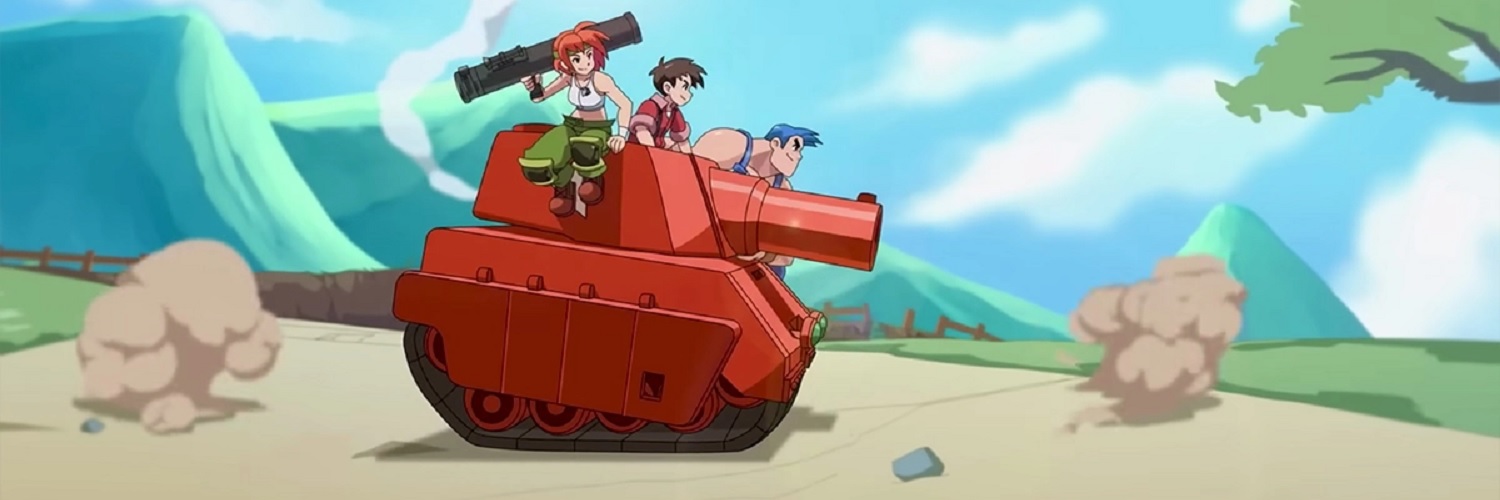
Advance Wars 1+2: Re-Boot Camp Switch Review
It has been a long time since Nintendo touched Advance Wars. We must look all the way back to 2008 when Advance Wars: Dark Conflict was released on the Nintendo DS. It felt like the series was long forgotten, but out of the blue, I was excited to see Nintendo revisiting the franchise when they made a surprise announcement that the first two titles would be getting remade into a collection on the Nintendo Switch at their Nintendo Direct 2001 showcase. Even though I had already played Advance Wars and Advance Wars 2: Black Hole Rising on the Game Boy Advance, so much time has passed that it felt like new again.
Although not developed by the team at Intelligent Systems, this remake is still in good hands with WayForward. The developers are known for games like the Shantae series and Mighty Switch Force. The idea for a remake makes sense, as now it enables all the new fans of Nintendo that have bought a Switch to jump on the series. Even existing fans can enjoy the experience again since it has been 20+ years since the first entry was released. The collection was initially supposed to be out in December 2021 but was delayed twice, once to fine-tune the game for release, but then a second time due to the awful events with the Ukraine invasion. Nintendo has now felt the time is right to release the remake, so this once tiny strategy game makes its jump from a tiny pocket handheld to a bigger screen and demonstrates how enjoyable its gameplay remains after all these years.

Both titles’ campaigns are in their full here, with some slight alterations to unit introductions to smooth out the flow of the early campaign. Initially, the menu makes it seem like you need to complete Advance Wars before being able to jump into Black Hole Rising. While beating Advance Wars does unlock the sequel’s campaign, simply clicking on “This story has yet to be revealed…” for the sequel in the campaign selection will thankfully allow people to jump straight into that. This does throw a warning since they are some crossovers between the two games and so spoiler warnings will appear.
As for the stories, they are light-hearted and are on the more comedic side, with the COs in charge of various armies the ones doing all the talking, their personalities coming through their portraits and eccentric behaviours. Dialogue is often done between missions and occasionally during them if something is introduced or requires an explanation. Advance Wars takes place in Cosmo Land, with the land split into territories. The player controls the Orange Star faction under attack from the Blue Moon army, eventually pushing them back and getting pulled into other wars between the various factions. The sequel, Black Hole Rising, takes place in Macro Land, with the armies from the first game now under a new threat and must once again work through missions to put a stop to this rising army. Having the two campaigns packaged together means that working through the games offers a good 37+ hours of content before jumping into any of the additional modes.
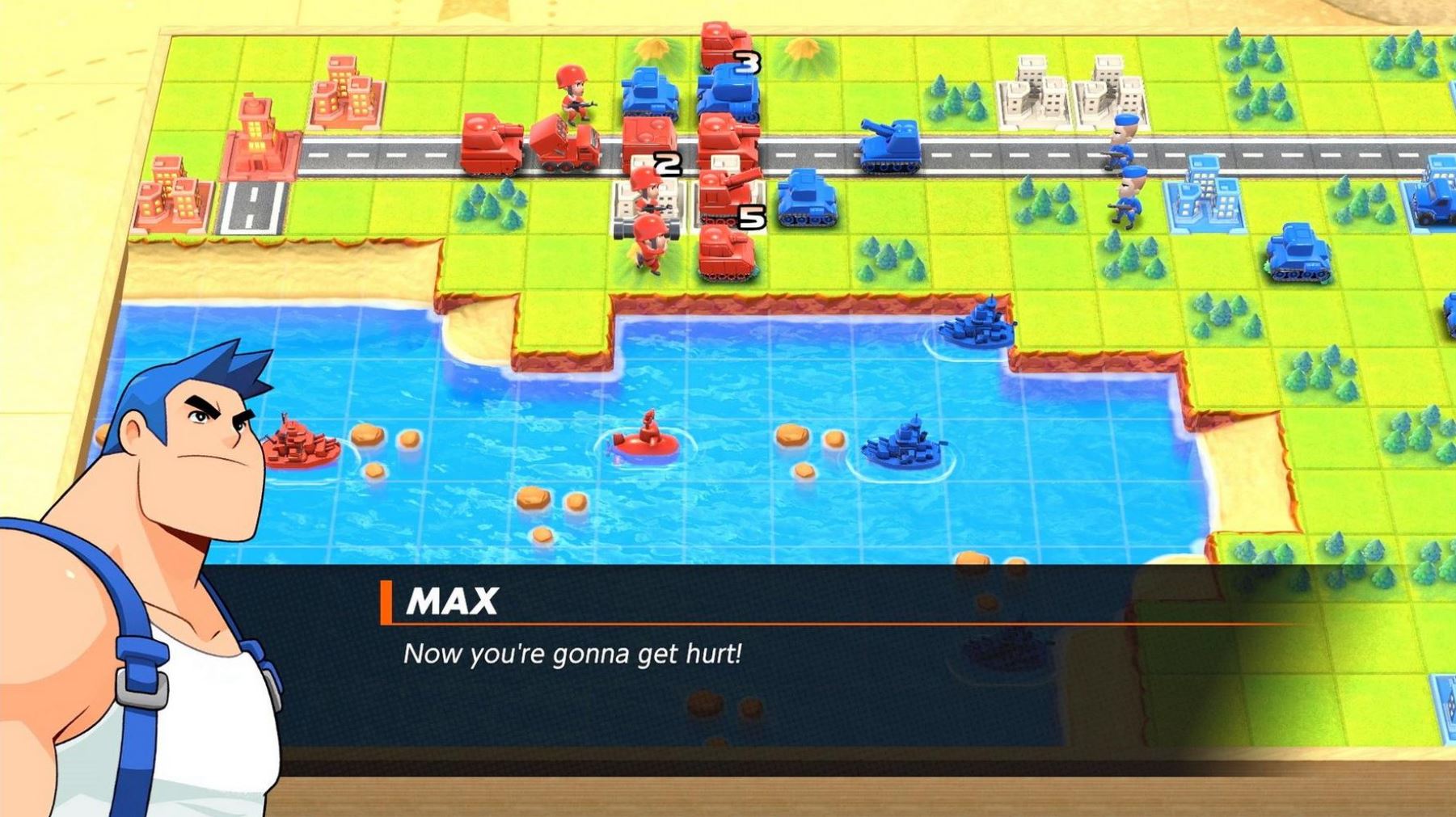
Let us get straight to the differences between the original releases and this new Switch remake. The obvious one is the new visual style. The titles were on the Game Boy Advance, which meant those games had a distinctive 2D look with their chunky pixel art across the unit models and character artwork, with simple but wonderful animations giving them charisma. Moving to 3D loses some of that charm, which I think happens a lot with older titles transitioning to 3D models, as it requires utmost mastery in modelling to capture the same essence and vibes of what comes through pixel artwork. One of the reasons why I feel it loses some of that 2D appeal is the unit models here are cleaner, polished and a bit stiffer and more sterile, almost like freshly purchased toys rather than tools of war being used in battle.
This adds to the new view that shows the end of the battlefields, like a board game placed on a background map, which adds to the more plastic toy design. I personally do not think it looks back, but the persona that the units and maps had in the older games is somewhat lost within this updated presentation. What does improve is the CO portraits and animations, as they now have a new lease of life due to the upgrade to anime aesthetics at the high resolution. The soundtrack has been re-recorded as well, upping the quality of the music compared to the sound capabilities of the Game Boy Advance. Plus, the COs get to do a little talking. While not fully voiced for all dialogue – the characters do partial voiceovers during the battle but will do full voices for key scenes.
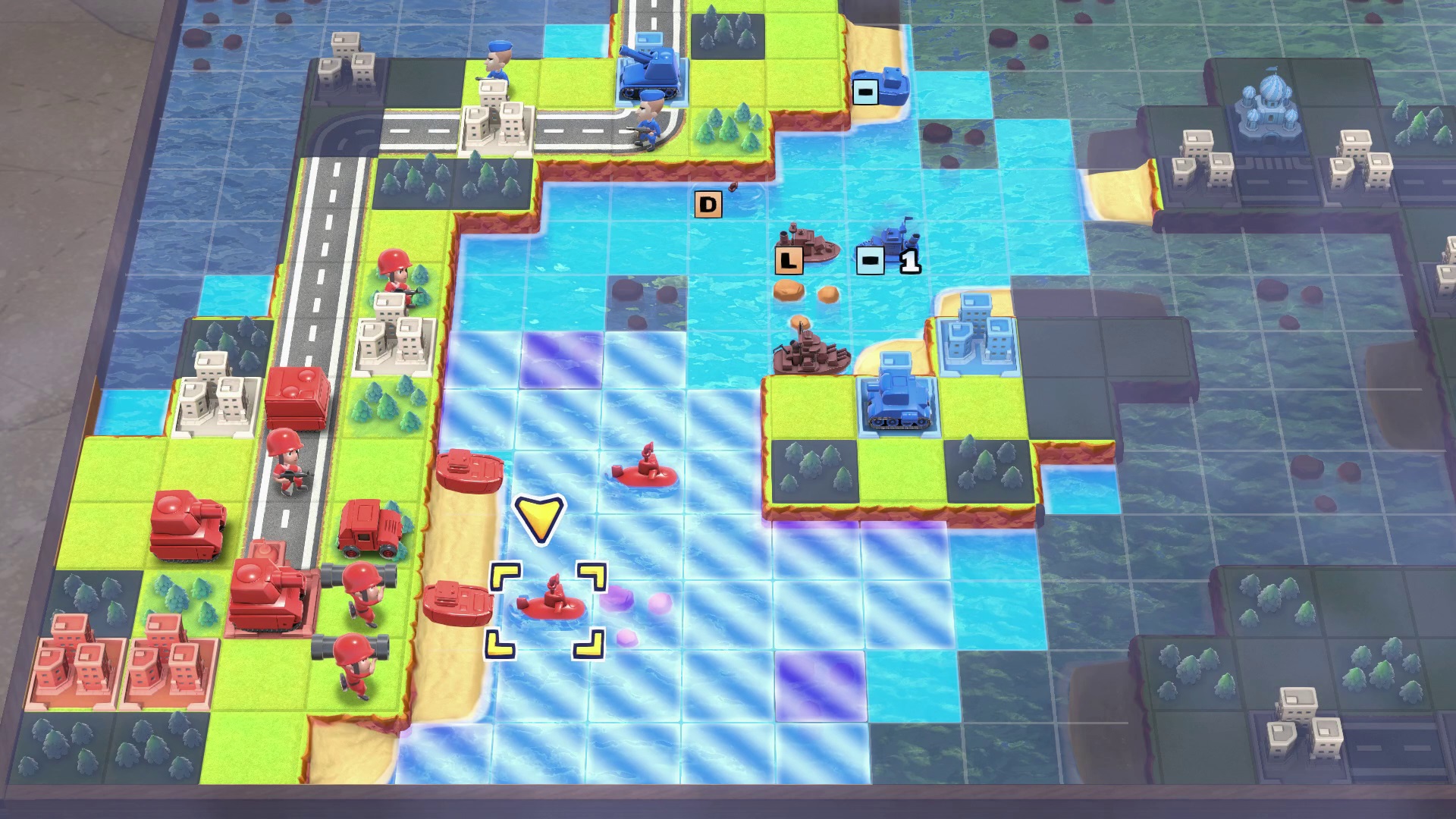
Added features, such as being able to fast-forward the battles and reset a turn and take again help with quality of life improvements. There is no actual rewind, so if you forget to retake the turn then the only other option is to restart the mission, but it’s still a nice addition to at least reset one turn and see if you can alter the outcome. Maps can be zoomed in/out to make it easier to see where units are placed to help with tactical decisions. All these little improvements make the experience more in line with modern games. The option to not use them is fine if people want to keep the experience more traditional.
On to the gameplay, and this is where things return to the early 2000s as this remake is as faithful to the gameplay as you can possibly come. No changes have been done to the core mechanics of how it plays out, which is going to be brilliant for original fans. Newcomers will get to discover what made Advance Wars such an addictive game with such a faithful adaptation. At its core, Advance Wars is a turned-based strategy game where each side, from two to four armies, takes turns in moving their units on a grid-based map with the objective to kill all the opposing units or capture the enemy base.
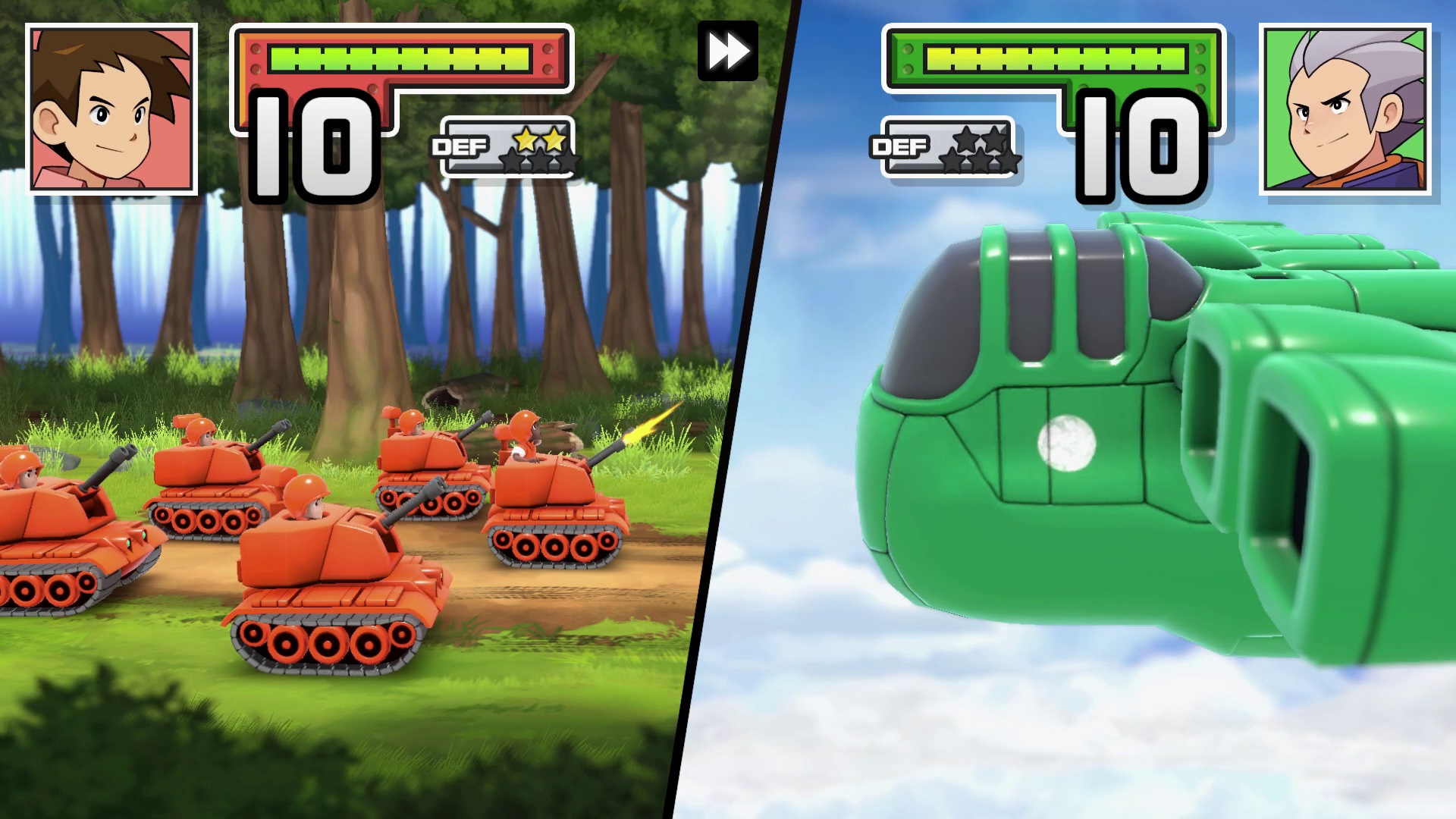
What makes this the Nintendo way is they took a genre that is often complex and made it suitable for people who are not heavily invested in strategy games. There is even the option to switch difficulty on the fly between classic mode or casual mode to help people get past tough missions. It also helps that the game’s mechanics are straightforward to understand. There is no proper resource gathering, such as in more complex strategy games, like Command & Conquer or Age of Empires, as purchasing new units comes from money earned per turn, with more cash coming in for more buildings owned on the map by converting neutral or enemy buildings to your team’s colour when a full infantry unit is placed on top and told to capture.
Advance Wars does well to help newcomers through the uncomplicatedness of the units, as each has an attack range and a movement range, which will cost fuel to perform. Some units simply use fuel for stationary actions per turn, such as a helicopter to keep it in the air. These details can be checked on both friendly and enemy units by selecting them and pressing a button, enabling better information on where to move and attack with your army. Types of surfaces on the map will alter the distance a unit can travel, but these can also improve the unit’s defence rating (signalled by a 5-star rating) and will help reduce casualties when units come to battle in the cool animation that plays out on screen when the camera zooms in and the models scroll into the side view and play out their attack animation. Offensive turns always do more damage than when the defending team counters the attack on the same unit type, which happens by default if the defending team’s unit has not been killed; something to think about tactically. Going against a unit that your unit is weak against means less damage for the defensive team, but also their retaliation is most likely going to clean 6 of your 10 health points.
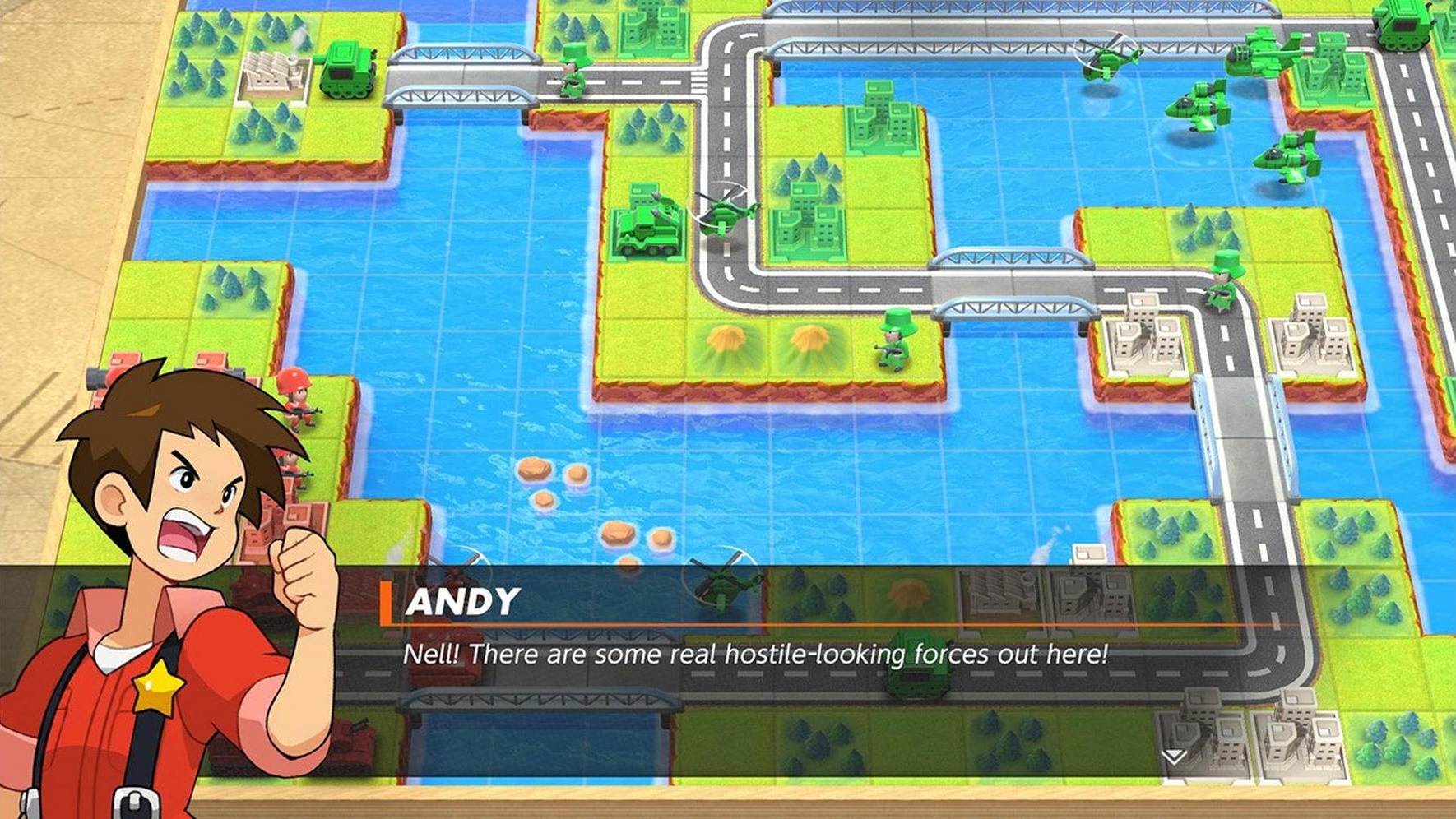
The key aspects of battle are the units’ strengths and weaknesses, as these play a part in a more advanced version of the rock-paper-scissor system. For example, a Tank is strong against an Anti-Air, and an Anti-Air is strong against a Helicopter. Rockets are weak against most things, but their range and power make them incredible for picking off targets. An average unit has 10 health, but pitting a unit that is strong against another can often wipe them out within a single turn. While there might not be that many unit types, around 25 in total including variations of similar types, each has a specific purpose, and that helps keep battles exciting when an army has full armaments of submarines, boats, fighter jets and tanks all going at each other, making sure the player smartly places their units at the right distance on the right environment to reap the benefits.
While the armies take turns to battle it out, a metre is building up for the CO powers. These are special abilities that can be activated, being unique across each CO. These are incredibly beneficial for the caster, as they offer powers like Andy’s Hyper Repair that restores 2 HP to all units and increases defence, Max’s Max Force that increases the power of direct combat units by 20, and Sami’s increased movement range and firepower. The sequel takes these powers a step further and adds a Super variant that is either a brand-new power for the CO or takes the existing power and makes it even better, such as Sami’s firepower changing from +20 to +50 for all-foot infantries.
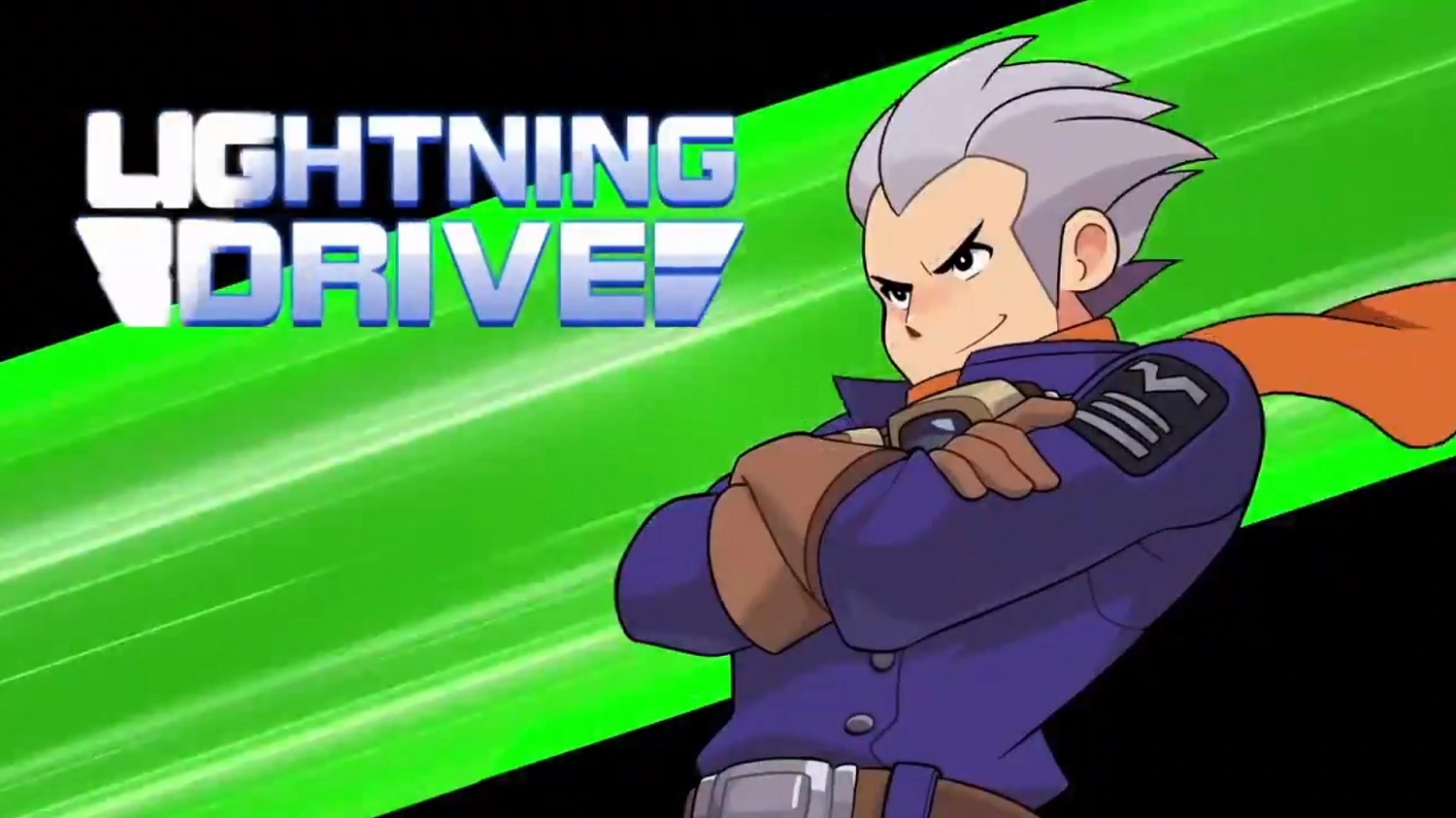
Advance Wars 2 is similar to the first game, although it throws in some new COs and new powers, an extra unit type, new terrain interactions, such as silo rockets, pipelines, which are like walls that cannot be passed, instead must be broken at their weak points to get through. It’s almost more like a classic PC expansion in terms of what it adds, with the new maps in the campaign and the COs as the main elements to build on the successful gameplay of the original Advance Wars. The maps are never humongous, but their compactness means matches are solely focused on the above systems and should not create games that last too long in the campaign. It all comes together to create a tactical situation that always remains tense and can swing the tide of battle to one side or another if a player positions their army in the wrong place or uses their CO’s power to the best of its ability, leading to amazing comebacks or overwhelming defeats.
Outside of the two campaigns, Advance Wars 1+2: Re-Boot Camp has a local Versus mode where either a single Switch or multiple Switch devices can battle up to four players. Online mode is specifically made for one vs one battle, but sadly, it requires friends to have the game to play against, which is a huge shame. Having some sort of online ability to fight random people in some sort of ranked or open matchmaking would have been fantastic. War Room is a sort of challenge section where the game pits the player against a CPU across a few selected maps to set high scores. The last two modes are a bit different. Hachi’s Shop is a place to use the coins earned from battles, mostly from the campaign, and purchase additional COs and maps to use in Versus Mode, along with unlocking the music and artwork to view/listen at your pleasure. While the game does have a huge selection of maps, thanks to combining both games together in a package, the Design Room is a place where players can make their own maps to use locally or share them online with everyone. If you fancy creating a dastardly battlefield that will blow the minds of even the most tactical geniuses, then this is the area for you.
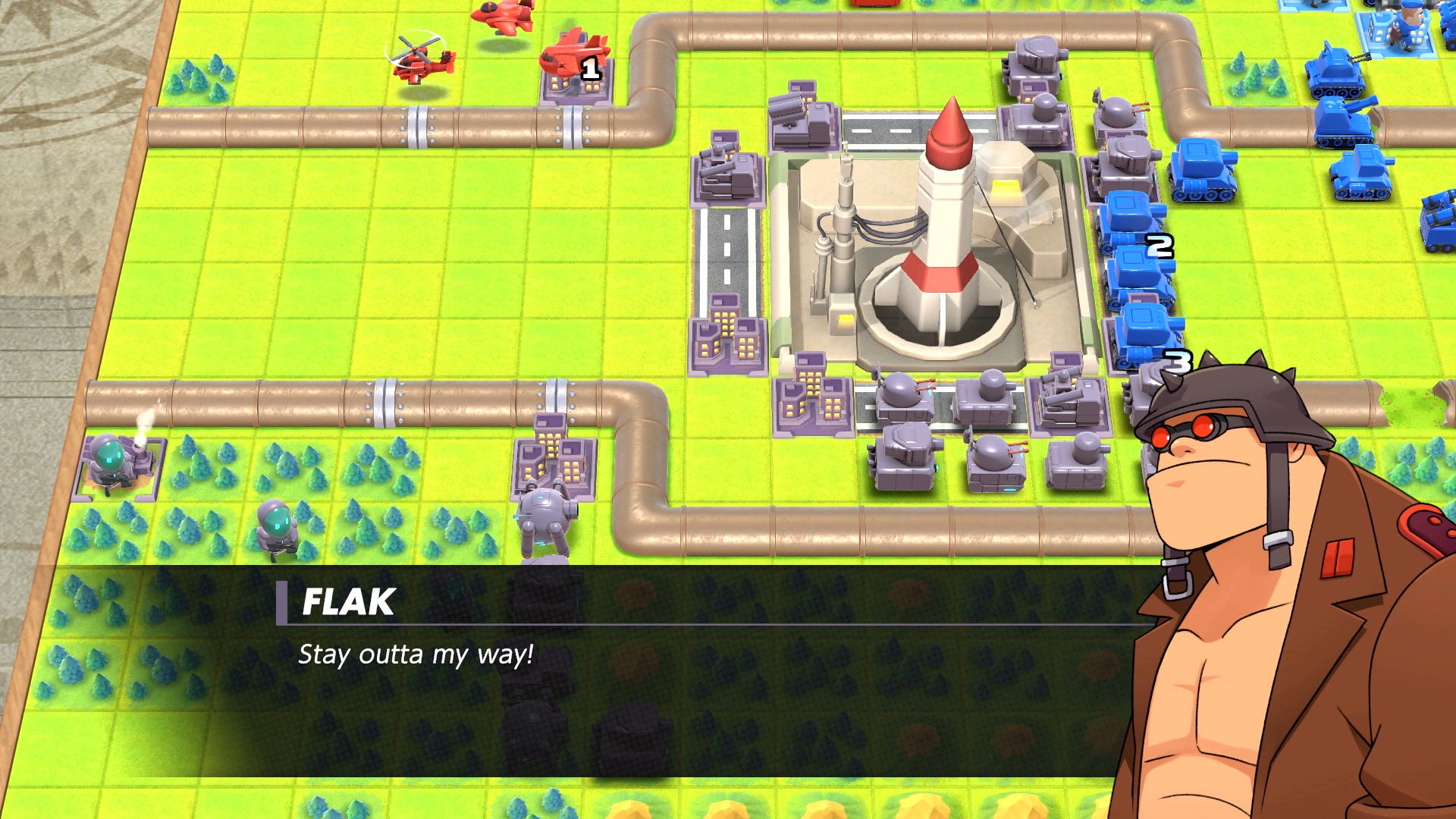
It is nice to see Nintendo not ignore all of its older classics that were well received by fans (*cough* F-Zero/Wave Race *cough*), as Advance Wars 1+2: Re-Boot Camp is a superb example of bundling two great turn-based strategy games and giving them a new coat of paint but keeping their core mechanics intact and unchanged. As the saying goes “If it ain’t broke, don’t fix it”, which Nintendo should think about for some of its other dormant franchises.
What this release means is that the engrossing strategic gameplay of the Game Boy Advance entries remains as addictive and enjoyable now as they did all those years ago, a testament to the original developer’s well-crafted gameplay mechanics. The only problem is the limited online because being exclusive to your friends and not having a ranking/open matchmaking feature is a huge opportunity missed. The rest of the package in Advance Wars 1+2: Re-Boot Camp is an easy recommendation for anyone who wants to challenge their tactical know-how on the miniature battlefield.
